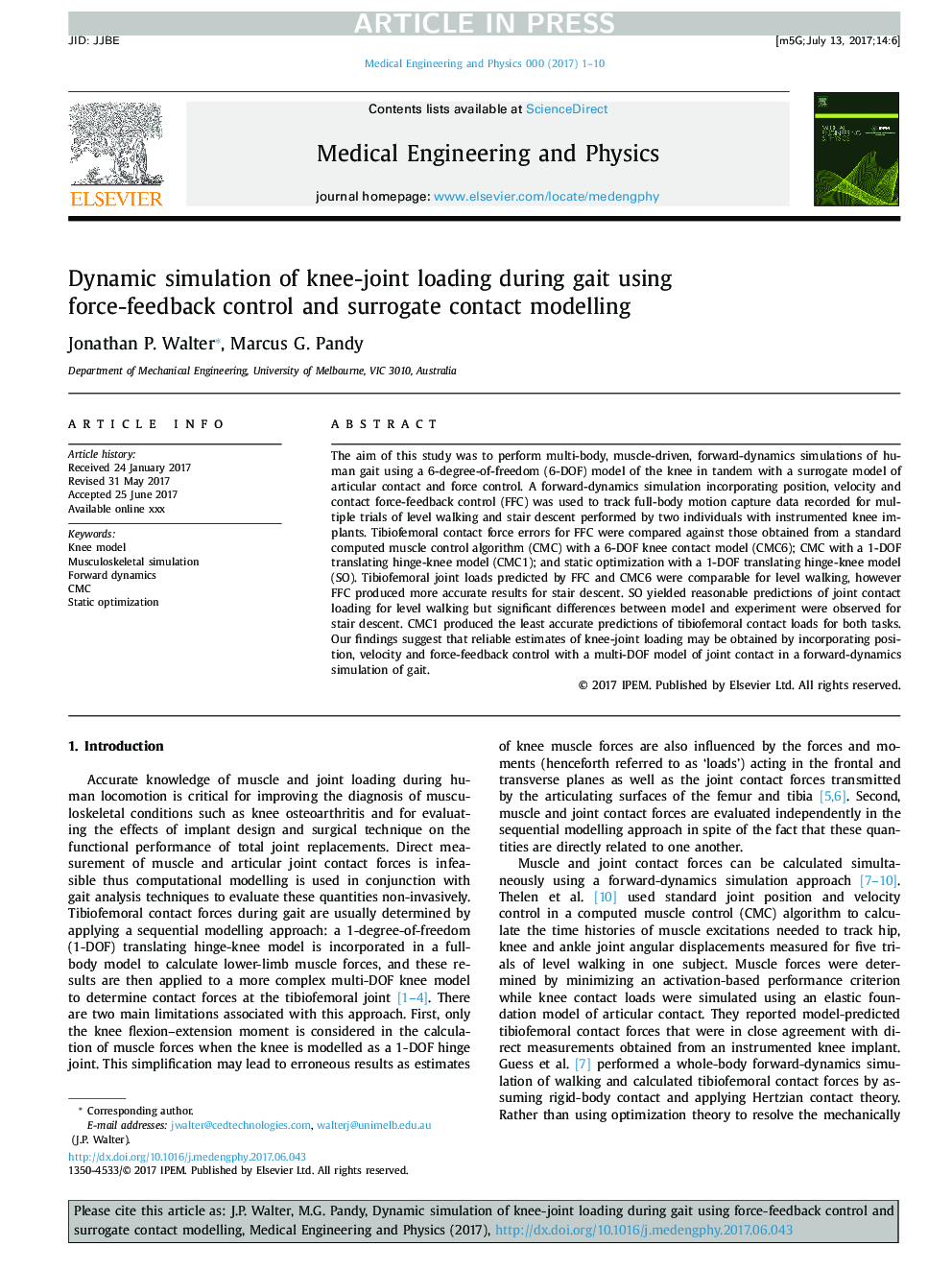| Article ID | Journal | Published Year | Pages | File Type |
|---|---|---|---|---|
| 5032608 | Medical Engineering & Physics | 2017 | 10 Pages |
Abstract
The aim of this study was to perform multi-body, muscle-driven, forward-dynamics simulations of human gait using a 6-degree-of-freedom (6-DOF) model of the knee in tandem with a surrogate model of articular contact and force control. A forward-dynamics simulation incorporating position, velocity and contact force-feedback control (FFC) was used to track full-body motion capture data recorded for multiple trials of level walking and stair descent performed by two individuals with instrumented knee implants. Tibiofemoral contact force errors for FFC were compared against those obtained from a standard computed muscle control algorithm (CMC) with a 6-DOF knee contact model (CMC6); CMC with a 1-DOF translating hinge-knee model (CMC1); and static optimization with a 1-DOF translating hinge-knee model (SO). Tibiofemoral joint loads predicted by FFC and CMC6 were comparable for level walking, however FFC produced more accurate results for stair descent. SO yielded reasonable predictions of joint contact loading for level walking but significant differences between model and experiment were observed for stair descent. CMC1 produced the least accurate predictions of tibiofemoral contact loads for both tasks. Our findings suggest that reliable estimates of knee-joint loading may be obtained by incorporating position, velocity and force-feedback control with a multi-DOF model of joint contact in a forward-dynamics simulation of gait.
Related Topics
Physical Sciences and Engineering
Engineering
Biomedical Engineering
Authors
Jonathan P. Walter, Marcus G. Pandy,
